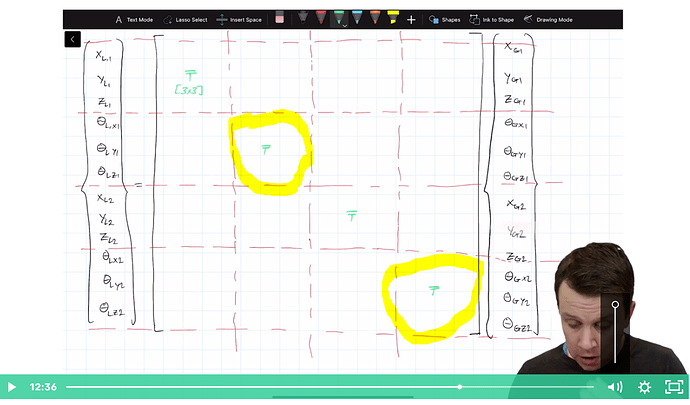Questions and discussion for this lecture live here. Fire away by hitting Reply below ![]()
Why does the rotation matrix work for angles the same way as it does for vectors?
Hi Johannes,
Could you elaborate a little further?
It would also be helpful to know at what point in the lecture you got confused.
Cheers,
Seán
When you enter these matrices, the first and the third diagonal element do what was discussed throughout the video, transform vectors. But the 2nd and 4th transform the angles as far as i understand. Its not directly clear why the same approach of the matrix works for the angles. Am i missing something?
Hi Johannes,
Good question. So, presumably you’re comfortable with the idea of using the 3x3 transformation matrix as a bridge between local [x, y, z] coords (or translations lets say) and global [X, Y, Z] , coords/translations. To recap; the transformation matrix essentially gives us a mapping from quantities measured with respect to one orthogonal reference frame (the local one) to those same quantities, measured with respect to another reference frame (the global one).
Now, if we think about how the three angles/rotations might be represented, if we use double-headed arrow notation, the three rotations can also be represented as line vectors, just like translations. In other words, the rotations (and the reference frame that describes them) posses the same orthogonality property as the reference frame used to capture the translations. As such, the same transformation matrix can be used to map rotations from a local to global reference frame.
If you’d like to read a little more on this, a good reference is Matrix Structural Analysis (second edition) by McGuire, Gallagher and Ziemian, in particular section 5.1.1. Pound for pound, probably one of the best reference texts you’ll get on this topic.
Hope that helps.
Seán
Yes, thank you! Great explanation, with the rotation as a vector its very clear!
